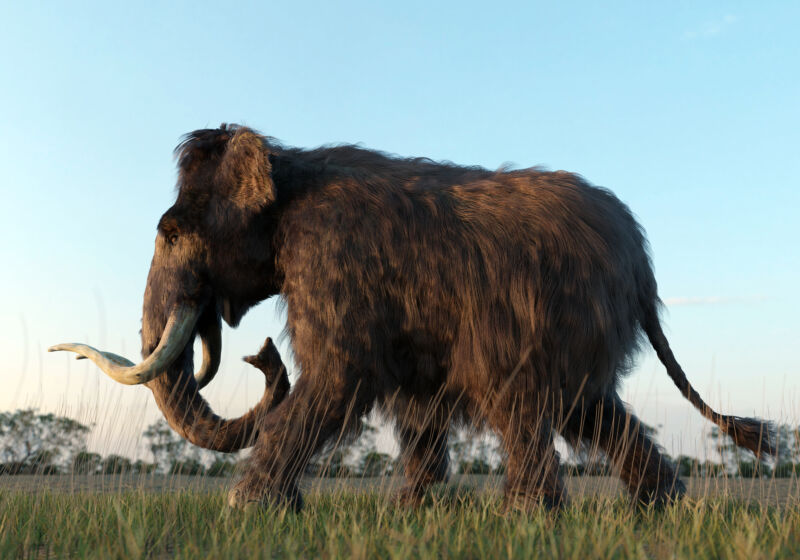
A single tusk is all that remains of a mammoth that lived approximately 14,000 years ago. Yet that one tusk has enabled scientists to uncover remarkable details about her life. Using ancient DNA, researchers determined her sex and how she was related to mammoths that left fossils nearby. Using analysis of isotopes found in the tusks, they re-created her approximate movements over two decades, from birth to death, learning that she frequented areas once inhabited by ancient humans.
Combined with Indigenous knowledge and earlier work tracking the movements of a male mammoth, we are beginning to gain unparalleled insight into the lives of specific animals, information that has implications for future understanding of Pleistocene ecology and its extinctions.
Long in the tooth
Mammoth tusks are essentially one long tooth, and their growth captures significant moments throughout the mammoth’s life. “Reading” information contained within tusks, paleontologists can, for example, determine when and if a mammoth starved, when it was pregnant or going through musth, and the season in which it died. It also contains a record of where it likely roamed throughout its life—if you have the right tools.
Those tools include the ability to “read” isotopic information from the tusk and relevant isotopic maps—or isoscapes—that match those isotopes to the landscape.
Such tools were employed In 2021 when team members tracked a male mammoth’s travels across Alaska approximately 17,100 years ago. At first, the Kik mammoth stayed in a relatively small area in northern Alaska—something the authors interpreted as possibly reflecting a young mammoth staying with its herd. Later in his almost 30 years of life, however, he roamed a great deal while repeatedly returning to certain areas. He ultimately died of starvation in either winter or spring.
The mammoth described in a paper published Wednesday in Science Advances lived approximately 3,000 years later in a wetter and warmer environment. Her tusk was found with fossil remains of some relatives—a juvenile and a baby mammoth—at Swan Point, an archaeological site in the Shaw Creek Basin of Alaska.
What’s in a name
Her name is Élmayųujey’eh (its pronunciation can be heard here), or Elma for short. Co-authors Evelynn Combs and Gerad Smith explain that she was named by the Healy Lake Village Tribe, a “Descendant Community” with members who descend from people who traditionally occupied the Shaw Creek Area.
The Healy Lake Village Tribe is part of a First Nations culture known as “Dene” (also known as “Athabascan”).
Finding the name for this animal was “tough,” according to Combs, the cultural resources manager for Healy Lake Village, as the Dene name for “mammoth” isn’t known. So Combs initiated informal conversations throughout the Tribe. The name they eventually chose was a word often used by Combs’ late grandmother, Elder Linda Kirsteatter.
Élmayųujey’eh, Combs explained, is an affectionate term emblematic of Dene humor and difficult to translate. You might use it to describe “your goofy, very beloved, silly animal.” The closest translation is “hellava looking.” It came about, Combs said, after one of her cousins announced, “If Aunt Linda were here, she would’ve called it ‘Élmayųujey’eh.’”
Tracking a mammoth
Finding Elma’s path in life required tracing isotopes found in different layers of her tusk. One such isotope was unknowingly ingested simply when the mammoth ate plants wherever she went. Plants incorporate strontium isotopes from the soil. Strontium and a few other elements act as great geological markers; different ratios of isotopes can be traced back to specific locations.
Mat Wooller is a professor at the University of Alaska Fairbanks, where he directs the Alaska Stable Isotope Facility. He described the link between isotopes and the landscape: “The geological map of Alaska is diverse. That diversity translates into a corresponding patchwork of strontium isotope signatures in the underlying geology. The underlying geology imparts a signature on the overlying soils and then the plants that grow on those soils. When herbivores like a mammoth move across this patchwork, they end up reflecting that patchwork of strontium isotope variability in their tusk, which grows over time.”

